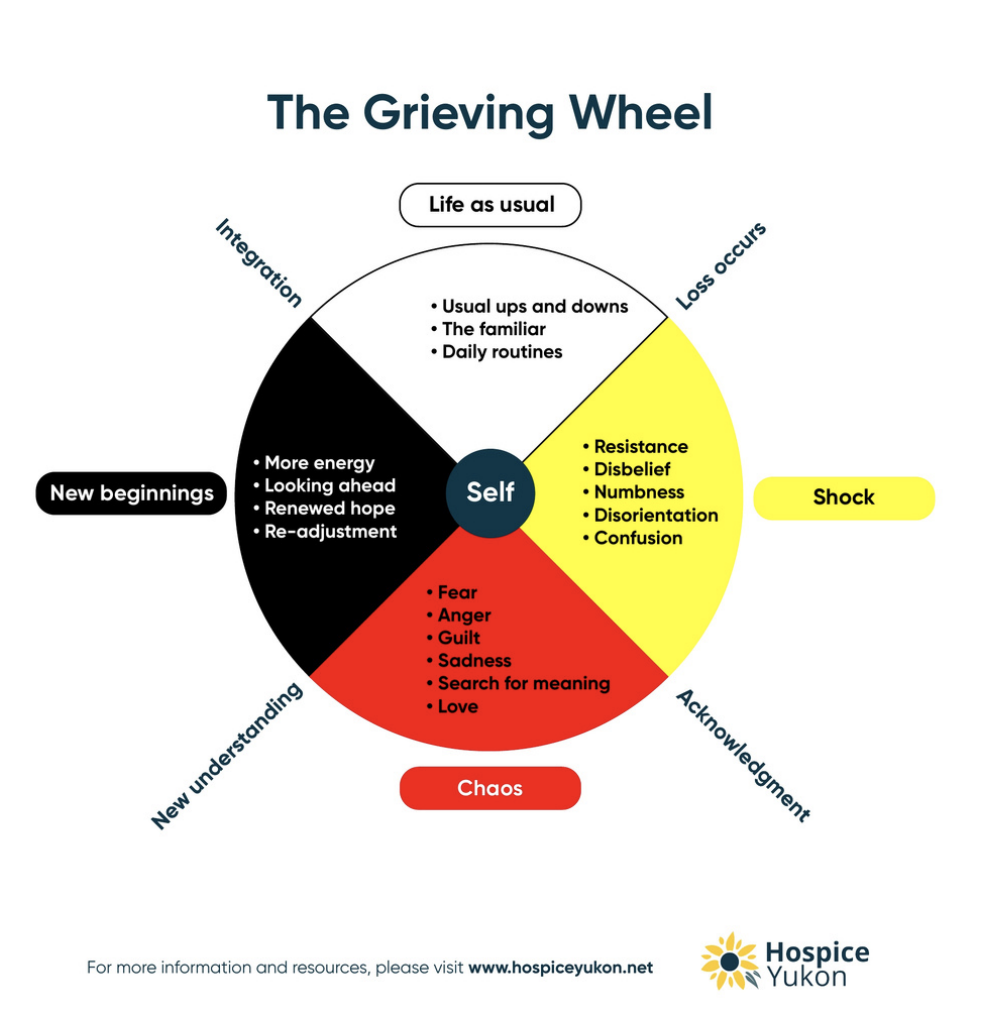When you experience the death of a family member, friend, or even a co-worker, you will likely go through a range of emotions. The cause of death, whether it is sudden or resulting from a chronic illness, can also impact the grieving process. With chronic illnesses like cancer, there may be a decline in health over a period of time and caregivers may have daily responsibilities caring for their loved ones. As they support their loved one, caregivers can often experience stress from navigating the healthcare system and providing daily care, and may sometimes neglect their own emotional and physical health. As a result, caregivers may experience mixed emotions when their loved one dies, including sadness for the loss and relief that they are no longer in pain. In some situations, the deceased may have concealed their chronic illness, which can feel like a sudden death to family and friends. Again, these scenarios can generate a range of feelings such as anger, disappointment, and betrayal that deepen the sadness.
Grief is the emotional reaction to a loss (e.g., death of a family member), while mourning is the external expression of the loss (e.g., wearing all black).1 How we mourn and grieve a loss may be influenced by religion and spiritual practices, cultural and family values, and individual differences. While there are many ways mourn the loss of a loved one, there are three components that are essential to any grieving process: participating in rituals like a funeral or wake; connecting to your emotions to experience the full range of emotions around losing a loved one; and being in community with others, versus withdrawing from others. When someone fails to engage in these components, they can get stuck in their grieving process which can lead to mental health conditions such as depression, anxiety, or thought disorders.
Below are two theories that help build understanding of the grieving process. Grief can be messy and not everyone will follow these stages in exact order. However, they give you a preview of the different emotions that can emerge during the grieving process.
Kübler-Ross Stages of Grief
Elisabeth Kübler-Ross outlined five stages of grief in her book On Death and Dying: What the Dying Have to Teach Doctors, Nurses, Clergy and Their Own Families (1969), and a sixth stage was added by David Kessler in his book Finding Meaning: The Sixth Stage of Grief:
- Denial: shock at the loss and rejection that the person has died; may feel numb
- Anger: intense feelings of anger and blame that may be directed at self and/or others
- Bargaining: negotiating with God or higher power to change behavior to reverse the death
- Depression: sense of despair and sadness that comes with recognizing what life is like without the person’s presence
- Acceptance: adjusting to life without the person present
- Meaning: finding meaning in the deceased’s life; a place for a hope and healing
The Grieving Wheel
The Grieving Wheel was developed by the Hospice Yukon, an organization that provides grief support and resources.2 The Grieving Wheel is based on the First Nations Medicine Wheel.
- Life as Usual: place where all people start
- Shock: occurs as loss, disbelief
- Chaos: As resistance decreases, there is an acknowledgement that the loved one has died. There is a resulting mixture of emotions
- New Beginning: As the person comes to a place where they accept that the sorrow will end, they adopt a new understanding. They start to readjust to life without the loved one in it
- Life as Usual: the person is coming back to a place where they feel like themselves again; a new normal
Grief and Death Doulas
A grief doula is a non-medical professional who offers compassionate care as people navigate the death of a loved one. Doulas offer emotional support, spiritual care, and practical guidance through their bereavement process and can identify relevant resources.
An end-of-life or death doula is a non-medical professional who provides comfort and care during the dying process and after death. In addition to providing emotional support, death doulas can also help with creating an end-of-life care plan, discussing the dying process, planning funeral and memorial services, and communicating with family members and other care providers.
References
1. National Cancer Institute. Grief, Bereavement, and Loss (PDQ®)–Patient Version. https://www.cancer.gov/about-cancer/advanced-cancer/caregivers/planning/bereavement-pdq#_11
2. Hospice Yukon. The Grieving Wheel. https://hospiceyukon.net/wp-content/uploads/2022/07/Grieving-Wheel-with-description.pdf
